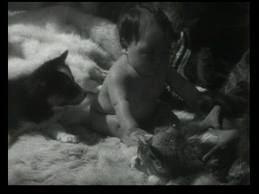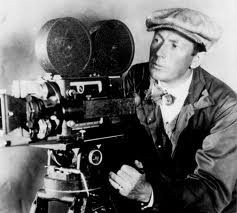Visual Anthropology
2013
Mariposa Institute
How big is the human family: where is the line that delineates – the Other? Are we all born equal? What is the difference between the literate and the non-literate mind? How do people resolve conflict in dispute settlement? What role does gender and sexuality play in Patterns of Behavior? What do birth, puberty, marriage and death ceremonies tell us about a culture? What role does religion play and do we seek a materialist or idealist explanation for behavior? These are some of the many questions that we will keep exploring as we take a journey into the human family using documentary film.
To answer these question we will use film as ethnographic data. Initially these films attempt a pure form of Objective observation - the nature of "objective" and the influence of film/observation, will be a constant thread in our discussion. Bitter Melons might attempt objectivity or scientific method - but by the time we get to Amazon Journal the film maker is there saying "I" and has a strong point of view.
So on this blog page we will start to amass images, film clips and quotes that relate to our endeavor: and a discussion board where we can keep the conversation going and add to our materials.
We start with Nanook of the North. For those who have not seen it - what a treat! For those who have already, welcome back. This is a film you can watch endlessly and always see and experience something new in its haunting evocation of a life that is fragile as ice - yet so full of pure joy. There is much controversy about Flaherty - but I hold him to be a great hero and the film priceless: so let us see what it has to tell us about this branch of the family living far above the tree line.
Wikipedia offers excellent pages on this subject, I suggest as an overview looking at this page with focus on Theories:
And this link gives a survey of Visual Anthropology:
Flaherty: a life in film
Click on the link for Flaherty's Wikipedia page and you will see the challenges he overcame to create a set of films that are often our only record of vanishing people. Flaherty is considered the Father of Documentary, but as you will see this is a long and difficult career as documentary and feature film entwine and clash.
The Criterion link will give you the best edition of the film and a discussion board as well as related films that will send you on a documentary journey.
The Course: here is our outline followed by more links, stills and clips.
Mariposa Institute
Visual Anthropology: Film&Culture
With, Sebastian Lockwood
Introduction
We will be using film as a way to talk
about the complexity and vastness of the Human Family. We are
interested in Patterns of Behavior. We want to know if the camera
can be objective and how the observer changes the observed. We will
use Dispute Settlement, Coming of Age and Shamanic Healing and Trance
as points of particular interest. We will seek to understand and
apply Cultural Relativism.
Readings for section One.
The Heider Text, Seeing Anthropology:
Cultural Anthropology through Film, is particularly useful: Heider
was there; he was involved with Dead Birds, one of the most
challenging films we will look at. He is an excellent storyteller and
frames the issues - there is also a CD that comes with the text (be
sure if you are getting it used it includes the CD) and you can read
the chapters and look at the corresponding clips. I recommend reading
the whole text but I will also give particular readings for each
section.
Reading for Section 1. Nanook.
Heider, Chapter One, and, Thinking
about Ethnographic Films, page 435.
Fatimah Tobing Rony's The Third Eye:
Race, Cinema and Ethnographic Spectacle, uses Nanook of the North
throughout (see the index) but for us pages 111 to 126 are the focus.
Readings for section 2. Bitter
Mellons & N!Ai: The Story of a !Kung Woman
Heider pgs, 388-390 and Chapter 11,
Facing the Supernatural.
Also, Elizabeth Marshall Thomas, The
Old Way, A Story of the First People. (She was there and 19 when her
father and Mother were shooting the films we will be watching, Bitter
Mellons & N!ai: The Story of a !Kung Woman) And you can hear
N!ai's clear voice in Marjorie Shostak's, NISA: The Life and Words
of !Kung Woman.
Reading for Section 3. Dead
Birds
Heider, pgs 86-97 On the Wikipedia
page for Dead Birds you will see that Heider is mentioned under
criticism and Authenticity. See also, Robert Gardner: The Instinct
to Preserve.
Readings for Section 4. Amazon
Journal & Life & Debt in Jamaica
Heider: Chapter 7, Distribution and
Consumption 202-228
Thoughts as we approach # 3.
The issue of objectivity arises from Point of View - the researcher will find what they are looking for; in data, or patterns of behavior.
One of the first examples of this came with Napoleon Chagnon,
and his work with the Yanonami. As I began studying Anthropology, Chagnon's work was all the talk of the field: he believed he had found a group of people who displayed a biological predisposition to violence. Remember that anthropology had suffered much being often called, the Handmaids of Colonialism and the work of Anthropologists like Carlton Coon whose attempted to show race typology - grist for the mill of racist regimes.
With Chagnon came films that showed violent behavior, axe fights, head smashing contests and the use of hallucinogens that lead to Hecura spirit battles - and moments of sudden violent domestic quarrels. It seemed for a moment, to those of us who believed in biological equality, that Chagnon had found something that supported the work of behaviorists like B.F.Skinner.
Now Chagnon has published a book that is a defense of hos life and work. The media reaction ranged from a gushing NPR radio piece, not a critical word and agreement that the Anthropology community had been mean - this from a man who looked for mean he was, by all accounts, very mean - then the New York Times Magazine gave a more even handed article on his work, but still not exposing some of the worst of his practices. And then the Book review came in with a review that truly exposes how dangerous and damaging his work was to the people he "studied." Here are links to those pieces - the book review:
and the NYT magazine article:
Having watched Bitter Melons:
And, N!AI, the story of a !Kung Woman:
We have seen a film maker change focus and point of view to accommodate criticisms of gender bias and monochronic context. Still, given the dangers and anger of the controversy - this will include the debunking of much of Margaret Meade's work:
This was a great disappointment to me as I thought her a true hero - at best she was sloppy and naive; but still a courageous explorer.
It s useful to look at The Gods Must be Crazy and see how the Dani are used, literally, in the film.
Now we approach Dead Birds, and here all of the questions of POV, focus and engagement come into play in a film that shows us Ritual Tribal warfare and a burial ceremony.



















No comments:
Post a Comment